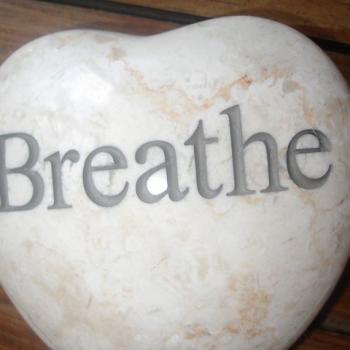
Leading Like a Monk?
Leading like a monk may not be the first example of leadership at the top of our minds.
We think of leaders as people who motivate us to get things done. Our assumption is leaders are probably thinking about plans, goals and objectives, and schedules. We assume leaders have expectations about where we are going and how soon we will arrive.
Monks must be more reflective, more introspective, than we think strong leaders need to be.
The idea of leading like a monk might make us wonder what that could possibly mean.
I have studied and practiced leadership, and monks have given me great insights into how we lead.
In general, as a place to start, those insights and questions follow a pattern.
Monastic Leadership Begins in Stillness
It took me a while to recognize the importance of stillness in leadership.
I assumed being a leader meant being up in front of people telling them what to do. When I was growing up, leaders directed other people. They were the ones who knew the answers and handed them out to the people around them.
Spending time with monks gives me things to reflect on, to consider later. Quite a few of those insights and questions for further reflection are about stillness.
The monks I know believe we gain many of the important things in our lives through our inner stillness. It is as we find and spend time encountering stillness that our leadership grows within us.
How do we find the stillness within us? Can we develop and strengthen our stillness?
Finding stillness is one of our first steps toward leading like a monk.
Monastic Leadership Listens
There have been many situations in which I thought I was a leader where I was not listening.
Listening is about being open, a form of hospitality for other people’s questions and reflection. We do not listen so we can pause in our talking or think about what else we would like to say. Listening is about taking time to reflect even after someone else has finished talking.
The monks I know practice listening. They are open to wisdom from many sources. Some of them listen to hear wisdom in the breeze or the sound of the surf.
Practicing has helped be become more open to listening to myself, to other people, and to stillness.
How can we learn to listen more deeply? Can we be open and pay attention more each day?
Listening is another significant step toward leading like a monk.
Monastic Leadership Grows by Remembering and Reflecting
As we recognize and appreciate stillness and learn to listen well, we begin to remember.
We are not merely remembering details or events from our past. Our memories feed our reflection.
We remember what someone said or what we may have done and start to wonder. I find I begin to remember people or experiences I have not considered for years. They spark my reflection.
As we remember our perspectives may often be changed. We begin to understand the person we felt was antagonizing us at the time was expressing their own feelings. What we did which felt so justified when we did it may not have been such a great idea.
Why do our memories see things in such slanted ways? How can we learn to be more reflective about the past?
Remembering and reflecting is the next meaningful step toward leading like a monk.
Monastic Leadership is Welcoming
As we practice stillness and listening, remembering and reflecting, we become more open. We learn to accept ourselves with all our faults and to accept the people around us.
I cannot remember a time when I have felt judged or evaluated by a monk. The monks I know are open to my questions and insights, and eager to share their own.
Monks practice hospitality, welcoming people who seek their help and guidance.
The leaders who inspire me respond in similar ways. While they hold others to professional standards, they are open to many people. They welcome people with diverse gifts to offer and invite others to join them.
Strong leaders, like the monks I know, recognize we cannot succeed on our own. We need to work with other people, particularly people who are not like us.
Why do we feel we need to be exclusive? How can we learn to become more welcoming?
Becoming welcoming is another important step toward leading like a monk.
Monastic Leaders Live on Purpose
The monks I know have a purpose in their lives. Not all of them express their purpose in the same way, but each of them knows where they are trying to go.
People do not become monks by accident. It takes practice and effort and time, in the same way leadership does.
Some of us are asked to make serious sacrifices in our lives. We may need to develop aspects of ourselves we do not yet recognize. There may be challenges we still need to discover and explore before we can overcome them.
Living on purpose is not the same thing as becoming obsessed. We need to find a balance between our focus and taking time for our other priorities. Our lives still have purpose when we take time off every so often.
What is the purpose in our lives? How can we explore and discover our deeper purpose?
Living on purpose is another essential step toward leading like a monk.
Leading Like a Monk is Not a Checklist
Leading like a monk is neither a checklist nor a clear, established series of steps. Each of us learns in our own ways. We practice, we learn, and we begin to take the next step.
We learn to lead like monks by asking questions and gaining insight, reflecting and listening.
What draws us toward leading like a monk?
How will we take the next step toward leading like a monk?
[Image by homethods]
Greg Richardson is a spiritual life mentor and leadership coach in Southern California. He is a recovering attorney and university professor, and a lay Oblate with New Camaldoli Hermitage near Big Sur, California. Greg’s website is StrategicMonk.com, and his email address is [email protected].












